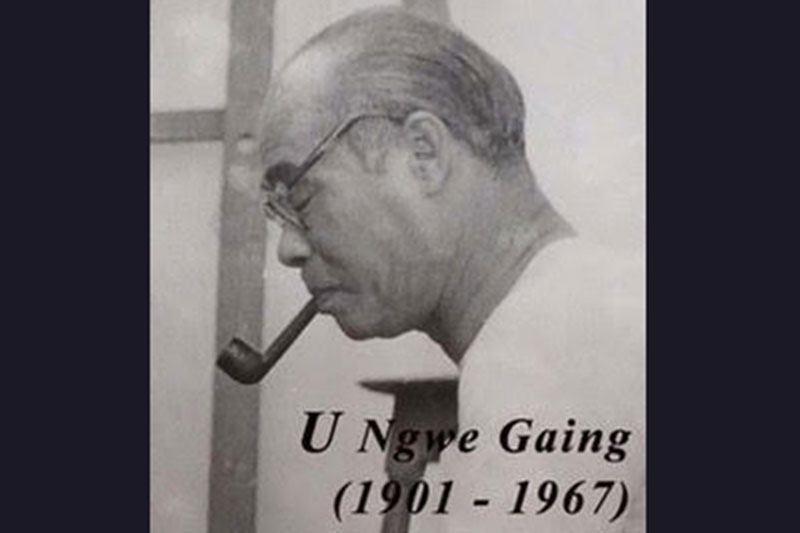

After the Second World War, U Ngwe Gaing became famous all of a sudden. As he hailed from Myeik, he used to speak with the strong accent of that district. U Ngwe Gaing was a determined man with a very frank, friendly and serious disposition. Not fond of worldly pleasures, he always abstained from drinking alcohol. Nevertheless, he had a predilection for tea and cakes, and was also fond of smoking cigars. He forever had a smile on his face. Besides being polite in manner, he was a very pious person. Thus, he commanded respect among those in the circle of literature, art, music and the performing arts. There is a saying that goes: “To master a subject, one has to acquire virtue and intelligence.” But U Ngwe Gaing’s model qualities were his eagerness and endeavor. Such qualities enabled him to become an eminent artist.
His parents were U Aike Pon and Daw Su Ma. He used to copy pictures from old newspapers
used in the grocery. When he moved to live in Dawei, he studied painting under the artist U Ba Ohn who had come to Dawei with a troupe. He also studied art under U Pho Aung, a disciple of U Ba Ohn, who arrived in Dawei and opened an art shop. When U Pho Aung returned to Yangon, U Ngwe Gaing ran the art shop on his own. He took a correspondence course with an art school in the United States. Then U Ngwe Gaing left for Yangon to continue his studies. He lived with his first and foremost teacher U Ba Ohn at Than Zay. In addition, he studied with U Ba Nyan for about three years when the latter came back from England.
During the British times before World War II, he became famous as a great artist at Pansodan in Yangon. He had his own studio and made a comfortable living. Under the Japanese regime, he served as a major in the Burma Defense Army and in the War Department. He produced documentary paintings about Burma’s Tatmadaw (armed forces). In 1951, the post-colonial government sent U Ngwe Gaing to London in order to study European paintings and to copy Myanmar royal artifacts in the British Museum. He wandered about museums and copied paintings all day long. When he came back to his lodging, he had to go over his sketches and drawings all night long to give them the final touches. Because of the language barrier, he used sketch paper to draw pictures of the food and drink that he wanted to order when eating out. In 1953, he received the title of “Ah Lingar Kyaw Swar.” A prolific artist, he created paintings of the struggle for independence, scenes of historic battles, and portraits of historic, well-known figures. He also produced huge paintings commemorating the anniversaries of Union Day, May Day and Peasants Day. U Ngwe Gaing joined U Ohn Lwin in his outstanding ability to master various styles of painting and media, including watercolor, oil, ink sketches and pencil sketches.
The painting “Life of Fishermen” is one of U Ngwe Gaing masterpieces. The background is an indistinct mountain range quiet under the blue sky. Another painting, “Life of Fisher- men,” shows the fishing families selecting the fish after the fishermen have returned from their toil at sea. U Ngwe Gaing also excelled at portrait painting. In “A Damsel Pining for Her Beloved,” we see a woman thinking about her beloved who has gone to war. Another portrait, “A Golden Neck,” is charming and lively. The lady’s jewels are as sparkling and animated as her bright smile.
